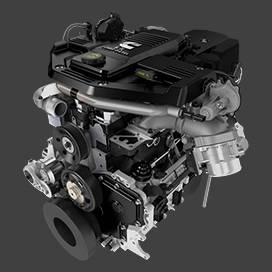Agosti . 01, 2024 00:11 Back to list
How to Safely Remove Brake Drum from a Trailer for Maintenance and Inspection Purposes
How to Remove Brake Drum from a Trailer A Step-by-Step Guide
Removing the brake drum from a trailer is a vital maintenance task that ensures the braking system functions efficiently. Whether you are replacing worn-out components or conducting regular inspections, it's essential to perform this procedure safely and correctly. Below is a detailed guide to help you navigate the process of removing a brake drum from your trailer.
Tools and Materials Needed
Before you begin, gather the following tools and materials to make the job easier
- Jack and jack stands - Lug wrench - Brake drum puller (if necessary) - Screwdriver (flathead or Phillips, depending on your trailer) - Torque wrench - Safety glasses and gloves - Lubricant (like WD-40)
Step 1 Safety First
Safety should always be your top priority. Start by parking your trailer on a flat, stable surface. Engage the parking brake and, if you're working on a tandem axle trailer, chock the other axle to prevent any movement. It's also wise to wear safety glasses and gloves throughout the process to protect yourself from debris.
Step 2 Loosen the Lug Nuts
Using the lug wrench, loosen the lug nuts on the wheel that covers the brake drum. It’s often easier to do this while the wheel is still on the ground to prevent it from spinning. Turn the lug nuts counterclockwise until they are loose but do not remove them entirely just yet.
Step 3 Raise the Trailer
Once the lug nuts are loose, use the jack to lift the trailer. Position the jack under a solid portion of the frame and elevate the trailer high enough to allow for safe access to the wheel. Once the trailer is lifted, place jack stands securely under the trailer to provide additional support.
Step 4 Remove the Wheel
removing brake drum from trailer

Now that the trailer is raised safely, finish removing the lug nuts completely. Carefully take off the wheel and set it aside. With the wheel removed, you will now have access to the brake drum.
Step 5 Inspect the Brake Assembly
Before removing the brake drum, take a moment to inspect the brake assembly. Look for any signs of wear or damage. Familiarizing yourself with the components before disassembly can help you understand their arrangement, making it easier for reinstallation.
Step 6 Remove the Brake Drum
Most brake drums are held in place by the wheel's lug nut configuration, but some may have additional retaining screws. If your drum features screws, use a screwdriver to remove them. After that, you should be able to slide the drum off the hub. If it’s stuck, you can use a brake drum puller to gently coax it off without causing damage.
Once you've removed the drum, check for any scoring, cracks, or other signs of wear, which may indicate a need for replacement.
Step 7 Reinstallation and Torque Specifications
After servicing or replacing the brake components, reinstall the brake drum by sliding it back onto the hub. Ensure it fits snugly. If there were retaining screws, reinstall them at this stage.
When reattaching the wheel, place it back onto the hub and hand-tighten the lug nuts. Lower the trailer back to the ground and use a torque wrench to tighten the lug nuts to the manufacturer’s specifications, ensuring everything is securely fastened.
Conclusion
Removing the brake drum from a trailer is a manageable task if done with care and attention to detail. Regular maintenance of your trailer’s braking system is crucial for safety on the road. By following the steps outlined above, you can ensure your trailer remains in optimal condition, ready for your next adventure. If you're ever unsure, don’t hesitate to consult a professional or refer to your trailer's service manual for specific guidance tailored to your model.
-
IVEKO High-Performance Brake Drums Durable & Precision-Engineered
NewsMay.17,2025
-
Brake Drum Man High-Quality Drum Brake & Shoe Solutions
NewsMay.17,2025
-
Brake Drum Man Premium Drum Brake & Shoe Solutions OEM-Compliant
NewsMay.16,2025
-
Brake Drum Man High-Quality Drum Brake & Shoe Kits for Vehicles
NewsMay.16,2025
-
Brake Drum Man High-Quality Drum Brake Parts & Expert Solutions
NewsMay.16,2025
-
Brake Drum Man High-Quality Drum Brake & Shoe Solutions
NewsMay.15,2025
